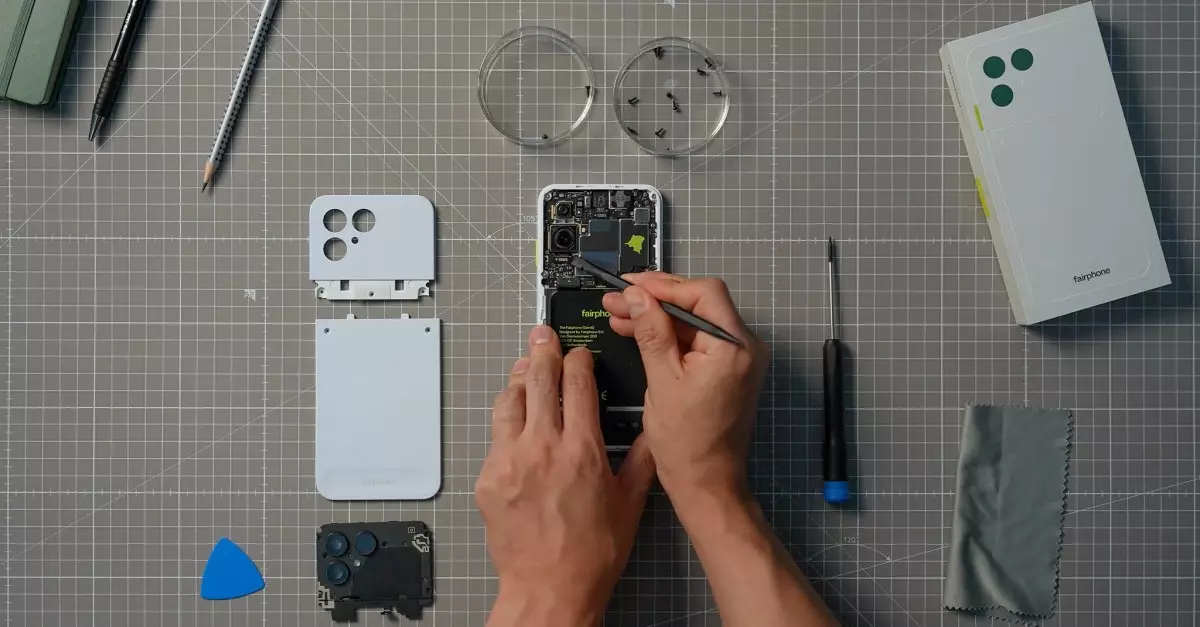The Fairphone 6 emerges as a bold statement in a smartphone industry often obsessed with relentless specs and incremental upgrades. Instead of chasing the highest-end chips or the most impressive cameras, Fairphone takes a different route—prioritizing longevity, repairability, and ethical manufacturing. While it might lack the raw power of flagships powered by the latest Snapdragon chips or ultra-high-resolution multi-lens cameras, its true strength lies in its design philosophy. The phone appeals to consumers who are tired of disposable devices, advocating a model where quality is measured by repairability and sustainability rather than just raw performance metrics.
The choice to incorporate only minimal features—like a modest dual rear camera and a USB 2.0 port—might seem like concessions to power users, but they reflect a conscious budget for durability rather than fleeting technological trends. Such trade-offs underscore a willingness to sacrifice superficial specs in favor of a device that can truly last, be fixed, and remain functional over years rather than months. This reverse approach to flagship design is where Fairphone asserts its authority: the idea that a smartphone’s worth is not solely measured by hardware raw power, but by its capacity to endure and be maintained by its owner.
Unparalleled Repairability Sets a New Standard
What makes the Fairphone 6 a standout is its unparalleled repairability. Achieving a perfect score from iFixit for the fifth consecutive time—the only manufacturer to do so—is a shining testament to their commitment. The design keeps maintenance simple and approachable, requiring only a T5 Torx screwdriver and seven screws to access the battery. This minimal requirement contrasts favorably with many other phones that hide everything beneath layers of glued-in parts, making repairs costly or outright impossible for most consumers.
Constructed with modularity at its core, the Fairphone 6 emphasizes easy part swaps. The backplate is user-replaceable, opening avenues for swappable accessories and extended device lifespan. Fairphone emphasizes that most components, from the USB port to camera sensors, can be swapped out with minimal fuss, reducing e-waste while empowering users to take control of their devices. The firm’s stance on repairability underpins their mission: to create a phone that doesn’t become obsolete within a couple of years, but instead evolves with its owner.
However, it’s noteworthy that the manufacturer limits self-repair with certain delicate components like the mainboard—the only part glued in—acknowledging its complexity and safety considerations. Still, the broader scope for repairs redefines customer expectations and sets a powerful precedent for the industry.
Commitment to Sustainability and Long-Term Support
Fairphone’s approach extends beyond just repairability; it encapsulates a genuine commitment to sustainability. The device boasts an impressive IP55 rating, providing resistance against dust and splashes, despite its screw-and-silicon sealed design. While not the highest rating available, this level of sealing is quite significant for a modular phone, striking a balance between robustness and reparability.
Perhaps more compelling than its physical design is Fairphone’s pledge to software longevity. Guaranteeing seven years of Android updates and eight years of security patches signifies a forward-thinking approach that defies the standard industry lifecycle, which often leaves devices outdated and vulnerable within a few years. Such a commitment not only reduces electronic waste but also offers consumers peace of mind.
The five-year warranty and loyalty program encourage users to keep their phones longer, fostering a shift away from the culture of constant renewal. This model challenges the industry’s throwaway mentality and demonstrates that sustainable practices and consumer friendly policies can coexist with commercial success.
Market Positioning and Price Point
Despite its high repairability and sustainability credentials, the Fairphone 6 does not come cheaply. Its European retail price of €599 ($705) reflects its premium ethos rooted in responsible manufacturing. However, in the United States, the device is priced at $899 and is only available through Murena, operating on a privacy-focused, de-Googled OS—adding another layer of appeal for privacy-conscious users.
Fairphone’s positioning signals a market segment willing to pay a premium for longevity, repairability, and ethical sourcing. In a world where flagship phones often become obsolete within a year or two, the Fairphone 6 offers a compelling alternative—one built on principles rather than mere specifications, emphasizing a paradigm shift in consumer electronics.
While some will criticize it for falling short on raw power and features compared to mainstream flagships, the core value proposition remains compelling—this is a device designed for sustainability, customization, and extended use. The Fairphone 6 proves that the future of smartphones isn’t just about faster chips and flashier cameras, but about creating products that respect both the consumer and the planet.

